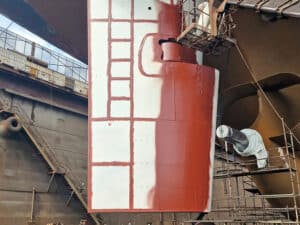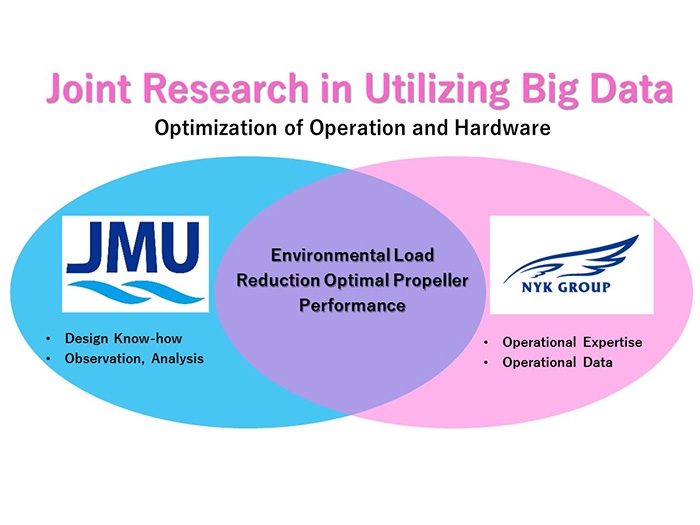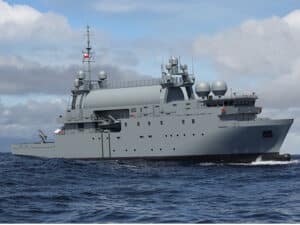
Japanese researchers report breakthrough in propeller design
Written by Nick Blenkey
MARCH 12, 2018 — In an example of joint research using big data, three Japanese companies report that they have successfully developed a highly efficient propeller by analyzing the conditions surrounding vessel propellers in actual operation.
The companies involved are (NYK), its subsidiary MTI Co. Ltd. (Monohakobi Technical Institute), and shipbuilder Japan Marine United Corporation (JMU).
The new propeller will be installed on two newbuild containerships that will be delivered in 2019, and it is claimed that it will achieve a 1.2 percent reduction in carbon dioxide (CO2) emissions by improving fuel efficiency.
Although propeller designers use computer simulations and test tanks are used to create an ideal shape, the actual water flow around the propeller of an oceangoing vessel can be rather complex. The three companies involved in this project felt that a vessel’s environmental loads could be further reduced if they could accurately monitor the condition of an operational propeller on an oceangoing vessel and then design an optimal shape based on the results.
The three companies then analyzed the condition of a propeller in operation on an oceangoing vessel.
The analysis was conducted by observing the cavitation and measuring the flow velocity around the propeller. Cavitation is a phenomenon in which air bubbles are generated when the pressure in a liquid suddenly drops. Excessive cavitation on the propeller blade causes ship vibration and leads to erosion of the propeller.
Afterward, they confirmed that the simulation data matched the actual conditions to a high probability. The highly reliable simulation was then used to achieve further optimization of propeller design and thus improve fuel efficiency.






Leave a Reply
You must be logged in to post a comment.